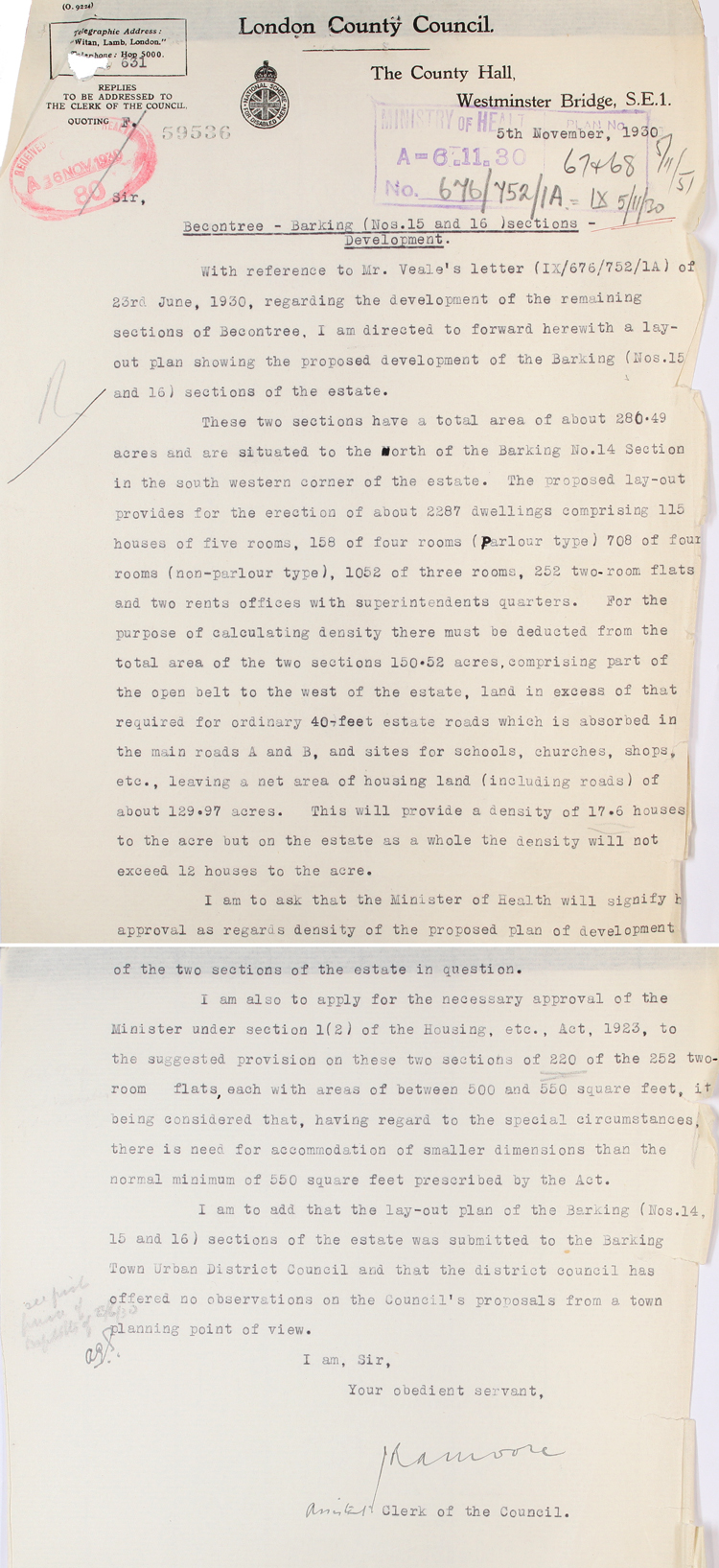Letter on the development of the Becontree Estate from London County Council to the Secretary of the Ministry of Health, 5th November 1930 (HLG 49/29)
With a population of 100,000 the estate remains one of the world’s largest housing developments.
Transcript
London County Council
The County Hall
Westminster Bridge, S.E.1.
15th November 1930
Sir,
Becontree – Barking (Nos. 15 and 16) sections- Development
With reference to Mr. Veale’s letter (IX/676/752/1A) of 23rd June, 1930, regarding the development of the remaining sections of Becontree, I am directed to forward herewith a layout plan showing the proposed development of the Barking (Nos.15 and 16) sections of the estate.
These two sections have a total area of about 280.49 acres and are situated to the North of the Barking No.14 section in the south western corner of the estate. The proposed lay-out provides for the erection of about 2287 dwellings comprising 115 houses of five rooms, 158 of four rooms (Parlour-type) 708 of four rooms (non-parlour type), 1052 of three rooms, 252 two-room flats and two rent offices with superintendents quarters. For the purpose of calculating density there must be deducted from the total area of the two sections 150.52 acres, comprising part of the open belt to the west of the estate, land in excess of that required for the ordinary 40 feet estate roads which is absorbed in the main roads A and B, and sites for schools, churches, shops etc., leaving a net area of housing land (including roads) of about 129.97 acres. This will provide a density of 17.6 houses to the acre but on the estate as a whole the density will not exceed 12 houses to the acre.
I am to ask that the Minister of Health will signify his approval as regards a density of the proposed plan of development of the two sections of the estate in question. I am also to apply for the necessary approval of the Minister under section 1 (2) of the Housing, etc., Act 1923, to the suggested provision of these two sections of 220 of the 252 two-room flats, each with areas of between 500 and 550 feet, it being considered that, having regard to the special circumstances there is a need for accommodation of smaller dimensions than the normal minimum of 550 square feet prescribed by the Act.
I am to add that the lay-out plan of the Barking (Nos.14, 15 and 16) sections of the estate was submitted to the Barking Town Urban District Council and that the district council has offered no observations on the Council’s proposals from a town point of view.
I am, Sir,
Your obedient servant,
J. Ramoore
Assistant Clerk of the Council
